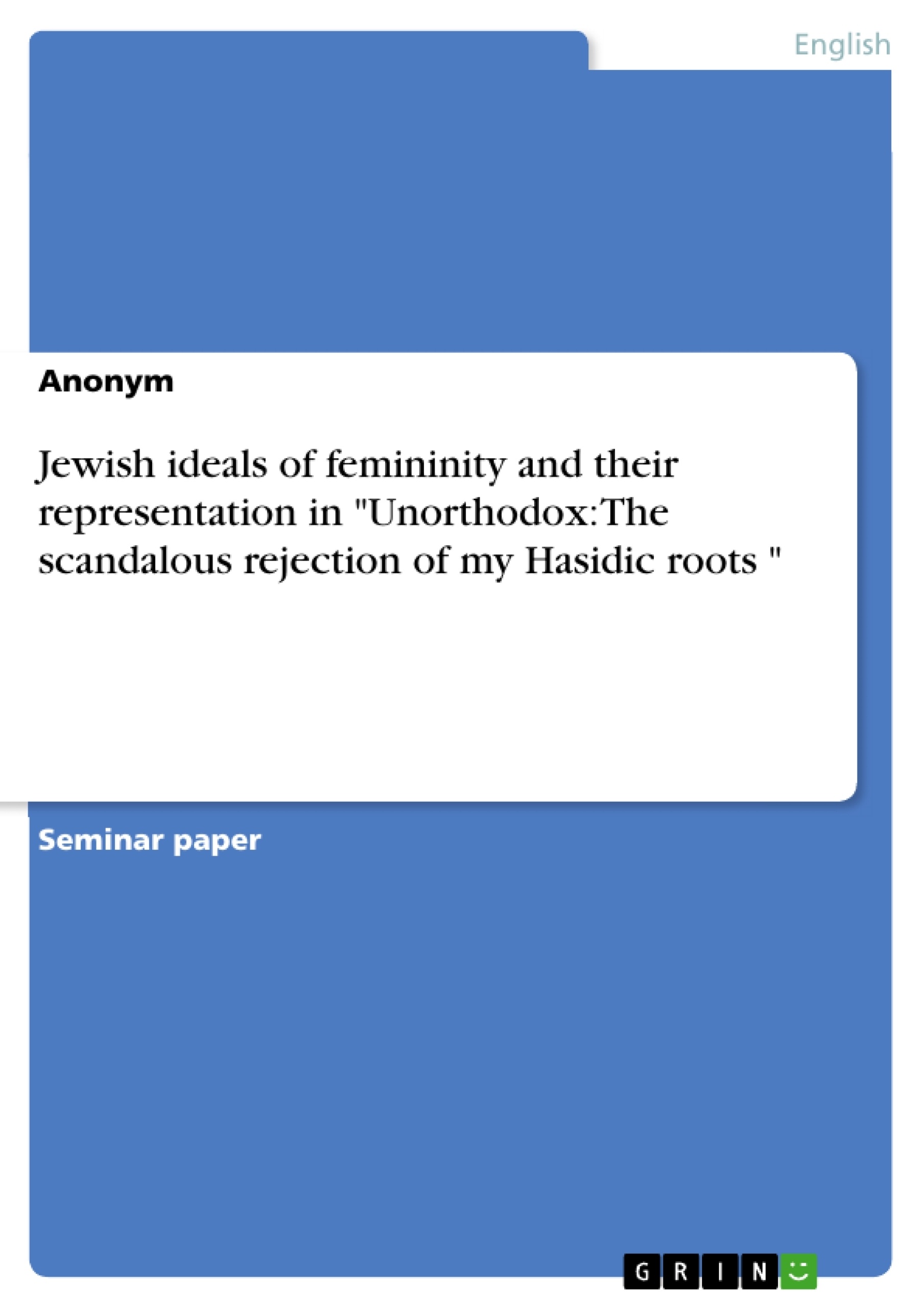This term paper discusses the representation of Jewish ideals in the book "Unorthodox" that was written by Deborah Feldman and published in 2012. The novel describes her experiences that range from her childhood to the beginning of her adult life that she spent in a deeply religious Jewish community in Williamsburg in New York City. A crucial aspect that rules her daily life in the Hasidic community are the strict gender-based laws that separate male and female members into two groups with different tasks, rules and social responsibilities.
Deborah feels limited and imprisoned by the rules she has to follow as a woman in her community. That is why her story can be viewed as one of finding freedom and independence in an environment that discourages women to make up their own mind.
Inhaltsverzeichnis (Table of Contents)
- Introduction
- The difference between sex and gender
- The concept of femininity
- Jewish ideals of femininity in Deborah Feldman's Unorthodox...
- Excursion: Simone de Beauvoir's concept of the other in The Second Sex in comparison to ideals of femininity in Deborah Feldman's Unorthodox.......
- Conclusion
Zielsetzung und Themenschwerpunkte (Objectives and Key Themes)
This term paper explores the representation of Jewish ideals of femininity in Deborah Feldman's memoir, Unorthodox. The paper aims to delve into the sociocultural construct of femininity within the context of a strictly religious Hasidic community, comparing it to broader societal perspectives on femininity.
- The distinction between sex and gender as a foundation for understanding femininity.
- Defining the concept of femininity and its distinction from masculinity.
- Examining the specific ideals of femininity prevalent within the Hasidic Jewish community, as presented in Unorthodox.
- Comparing Jewish ideals of femininity to Simone de Beauvoir's concept of the "other" in The Second Sex.
- Analyzing how the experience of a woman navigating these ideals within a restrictive community influences her perception of femininity.
Zusammenfassung der Kapitel (Chapter Summaries)
- Introduction: This chapter introduces Deborah Feldman's memoir, Unorthodox, and the context of her upbringing within a strict Hasidic community in Williamsburg, New York. It highlights the importance of understanding gender-based laws and the roles they play in shaping the lives of individuals within this community. The chapter sets the stage for exploring the specific ideals of femininity prevalent in this environment.
- The difference between sex and gender: This chapter explores the distinction between sex and gender, focusing on how these concepts are often conflated in societal discourse. It discusses the notion of "sex stereotypes" and how they contribute to the social construction of gender. The chapter also touches on the limitations of a binary system for understanding sex and gender and the importance of acknowledging the diversity of experiences outside of these categories.
- The concept of femininity: This chapter delves deeper into the concept of femininity, outlining its characteristics and contrasting it with masculinity. It examines how societal expectations and cultural influences shape the perception of femininity and how these perceptions can vary across different contexts.
- Jewish ideals of femininity in Deborah Feldman's Unorthodox: This chapter focuses on the specific ideals of femininity prevalent within the Hasidic Jewish community as represented in Unorthodox. It analyzes the expectations and roles assigned to women in this community, highlighting the impact of religious traditions and social norms on their lives.
Schlüsselwörter (Keywords)
Key terms and concepts within the text include: Jewish ideals of femininity, Unorthodox, Hasidic community, sex, gender, sex stereotypes, gender identity, Simone de Beauvoir, The Second Sex, other, social construction of gender, and religious influence on gender roles.
- Quote paper
- Anonym (Author), 2020, Jewish ideals of femininity and their representation in "Unorthodox: The scandalous rejection of my Hasidic roots ", Munich, GRIN Verlag, https://www.grin.com/document/1357853



